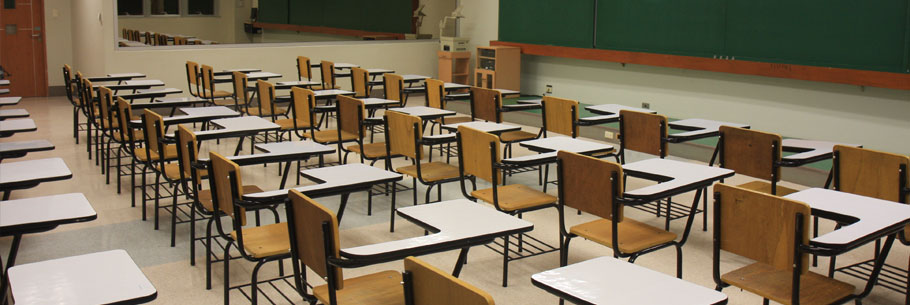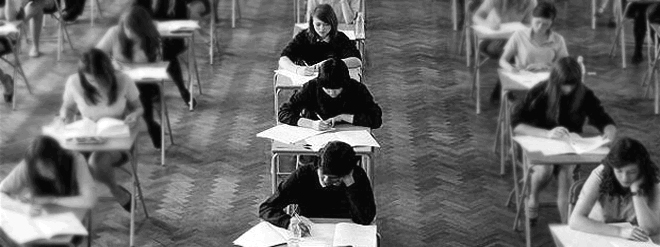Testing and Exams for Students with Dyslexia

As a teacher it is not unusual to have a student who performs well in class, is an active class member and appears intelligent, but struggles in tests and exams and therefore receives bad grades. This inconsistency can be confusing and can be a good indication that further investigation is required. Students do not set out to fail and this generally indicates a symptom of something far greater. In some instances this failure to perform well during formal testing is caused by the student having dyslexia and a diagnosis would enable the appropriate action to be taken to give the student the opportunity to reach their full potential whilst at school.
As a teacher becomes aware of how having dyslexia impacts on a student they are teaching it becomes fairly apparent what needs to happen to assist them to achieve their best result in a test or an exam. The purpose of a test or exam is to assess a students understanding of a topic that has been taught. For this reason it is important to remove as many barriers as possible to allow them to demonstrate their true intellectual abilities. The following is a list of considerations, which can be applied, to tests or exams for a student with dyslexia.

1. Extra time For many students with dyslexia the most important consideration is extra time to complete their assessments. Students with dyslexia have processing difficulties yet are as intelligent as all other students. In assessments where reading, writing and complex equations are involved they will often take longer to compete their work and therefore extra time is critical.

2. An alternate environment A quiet environment away from other students will often allow a student with dyslexia to concentrate more. An alternative environment may also reduce distractions, personal anxiety and external pressure.

3. More options for an alternate environment In an alternative environment other considerations can also be offered.
- – A teachers aid to read the questions for them when reading is not the purpose of the test or exam.
- – The opportunity to allow the students to sit an oral test or exam where a teacher asks the questions and the student is allowed to answer verbally while their answers are recorded. (See the movie the Blindside for an example of how this can work.)
- – The ability for the student to read the questions aloud for themselves so they can hear themselves as they speak.
- – An audio recording of the questions can be provided so students can replay them as many times as is necessary.
- – A scribe to write the student’s answers so the answers can be given orally, but the student’s ability to respond to the question is not affected by their difficulty to write.
- – The use of assistive technology such as laptops, spell checkers or speech to text software.
- – The opportunity to provide appropriate lighting and reduce undue noise.
- – The opportunity to allow a student to sit an exam at a time when they are at their mental best, often first thing in the morning or after a break in the school day.
- – If a student is required to sit a test or exam in a standard school environment, privacy boards placed around their desk and earphones can help increase concentration levels and to reduce distractions.

4. The test or exam format The format of a test or exam can also make an enormous difference for a student with dyslexia. Here are some suggestions to consider when creating a test or exam paper for a dyslexic student.
- – Increase the font size, put less text on each page, leave larger spaces for writing and working out and print the assessment paper in a tint of the student’s choice.
- – Avoid handwritten tests, computer generated text is easier to decipher.
- – Use simply worded, short basic questions.
- – Use visual aids or diagrams where appropriate to reduce the amount of reading required.
- – Refrain from using mulitple choice questions that play tricks with words. Students with dyslexia will often become confused, anxious and stressed when questions are worded purposefully to trip the reader up.
- – Underline, highlight or colour code words in questions that give a directive or indicate what the students is expected to do.
- – To reduce the amount of writing a students is expected to do, where appropriate, provide worded descriptions and allow the students to write the word to match rather than the other way around.
- – To again reduce the amount of writing a student is expected to do a fill the gap or circle the correct answer formats can be useful.
- – Ask questions that assess only the material you have taught.
- – Simply written multiple choice, true/false, fill the gap and circle the correct response are preferable.
- – Write simply multiple choice questions with the answers listed vertically, not horizontally as they are easier to read.
- – Provide extra paper, graph paper etc to allow for extra room for practice answers, extra working out or calculations.
- – Offer a calculator or a multiplication grid when appropriate to the test or exam format.
- – Avoid assessments where questions are listed in one medium such as exam booklets or on a white board and answers need to be given in an alternative medium such as an answer booklet. Information can be lost between question and answer. (In Australia the national testing program NAPLAN, follows this format making it extremely difficult for many dyslexic students).
- – Open book exams are often useful to gauge a students understanding of a topic and can reduce the amount of memorisation required.
- – Take home tests can allow a student the opportunity to take their time and demonstrate their full understanding.
- – Divide a test or exam paper into short segments allowing students to complete each segment over a period of days instead of in one long mentally exhausting sitting.
- – Don’t expect students to copy exam questions onto an answer sheet prior to an assessment or to transfer questions from one medium to another.
- – Score test or exams based on the correct number of answers given out of a total number of questions answered for each individual student, if alternative assessments for individual students are given..
- – Allow short breaks during tests or exams.
- – Do not deduct marks for incorrect spelling or punctuation when the assessment is measuring understanding of content in other areas.
- – Students with dyslexia may benefit from the opportunity to be able to make further alterations to teacher highlighted errors, in their test or exam paper before a final grade is given. You may provide this opportunity for a number of reasons; to allow for careless errors or errors caused by the anxiety or stress of the assessment process.

5. Preparing for the exam Pre test or exam considerations. The stress or anxiety of being formally assessed can be significantly reduced for students with dyslexia with the following suggestions.
- – Before the assessment conduct a personal review with a student to determine their understanding of a topic. This can allow for extra revision or practice to take place if necessary.
- – Conduct short questions and answer sessions throughout the teaching process to provide students with feedback about their understanding of a particular topic.
- – Give students sample questions to prepare them for the exam content and format.
- – Do a practice exam well before the actual exam so you can iron out any difficulties a student may have in advance.
- – Allow the students the opportunity to write some of the assessment questions and submit them for use in the test or exam.
- – Practice question answering strategies with the students before the test or exam.
- – Read all test or exam questions to the students before the exam commences.
- – Re-read the questions to those students who require extra exposure to the questions.

















